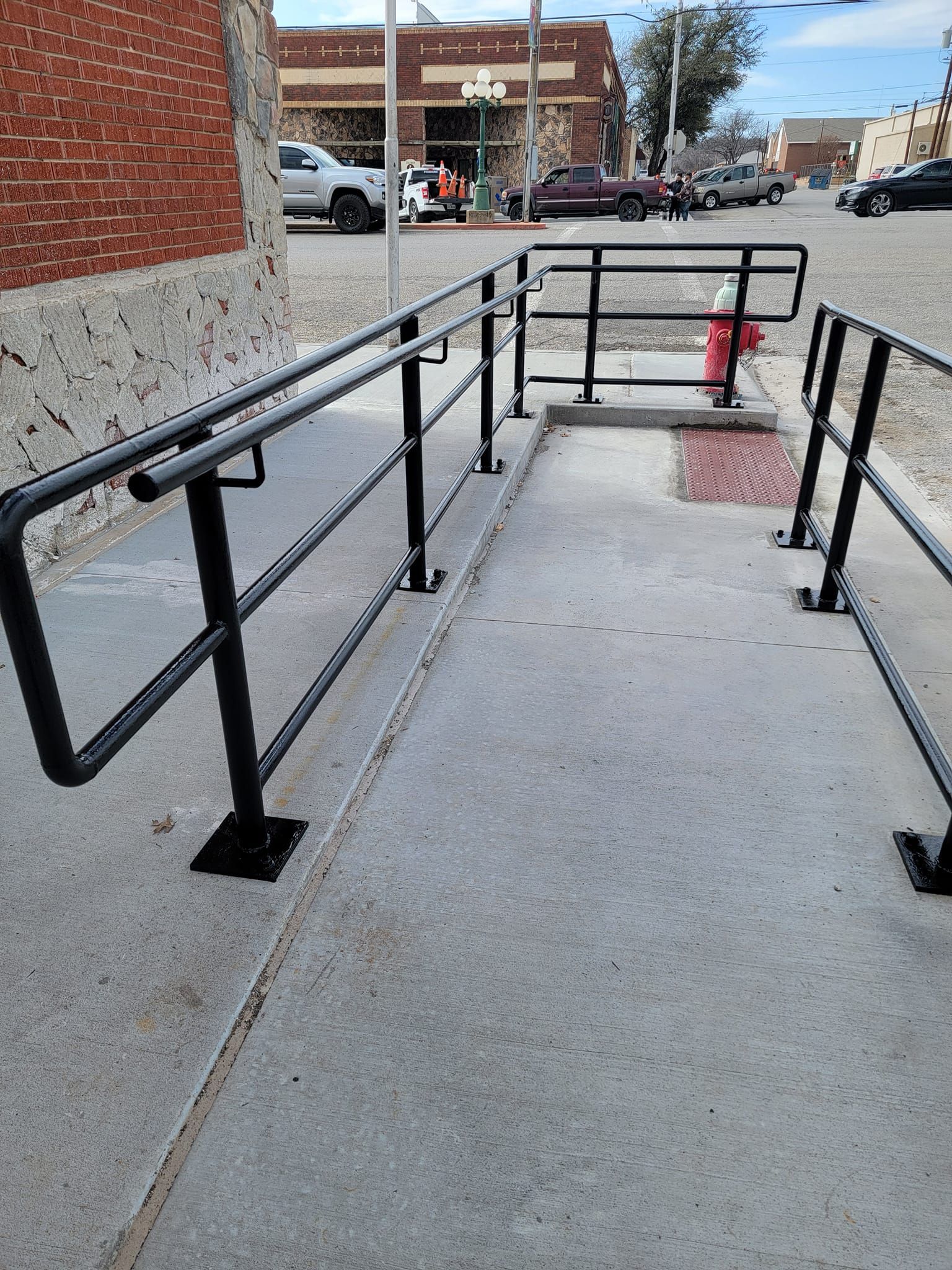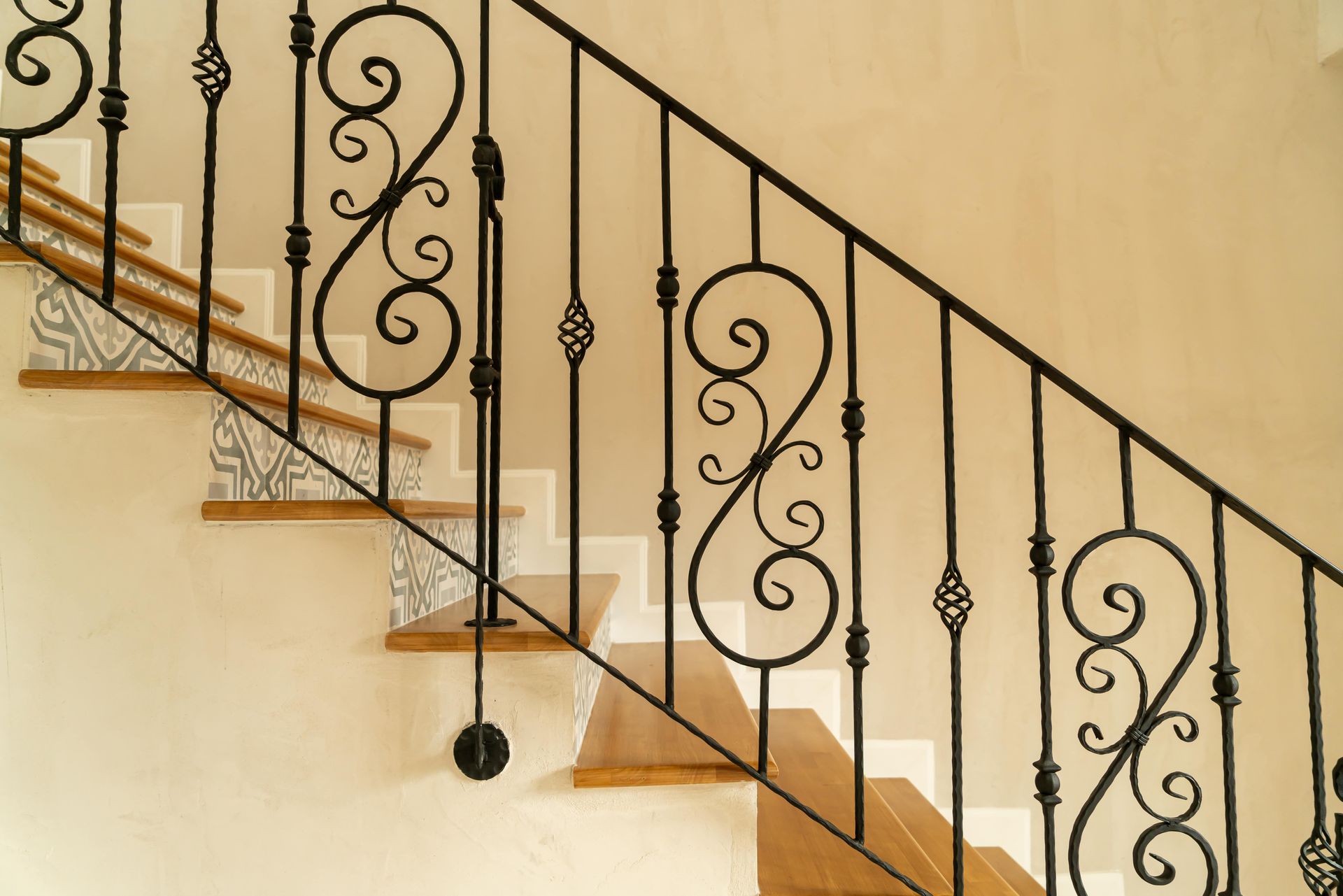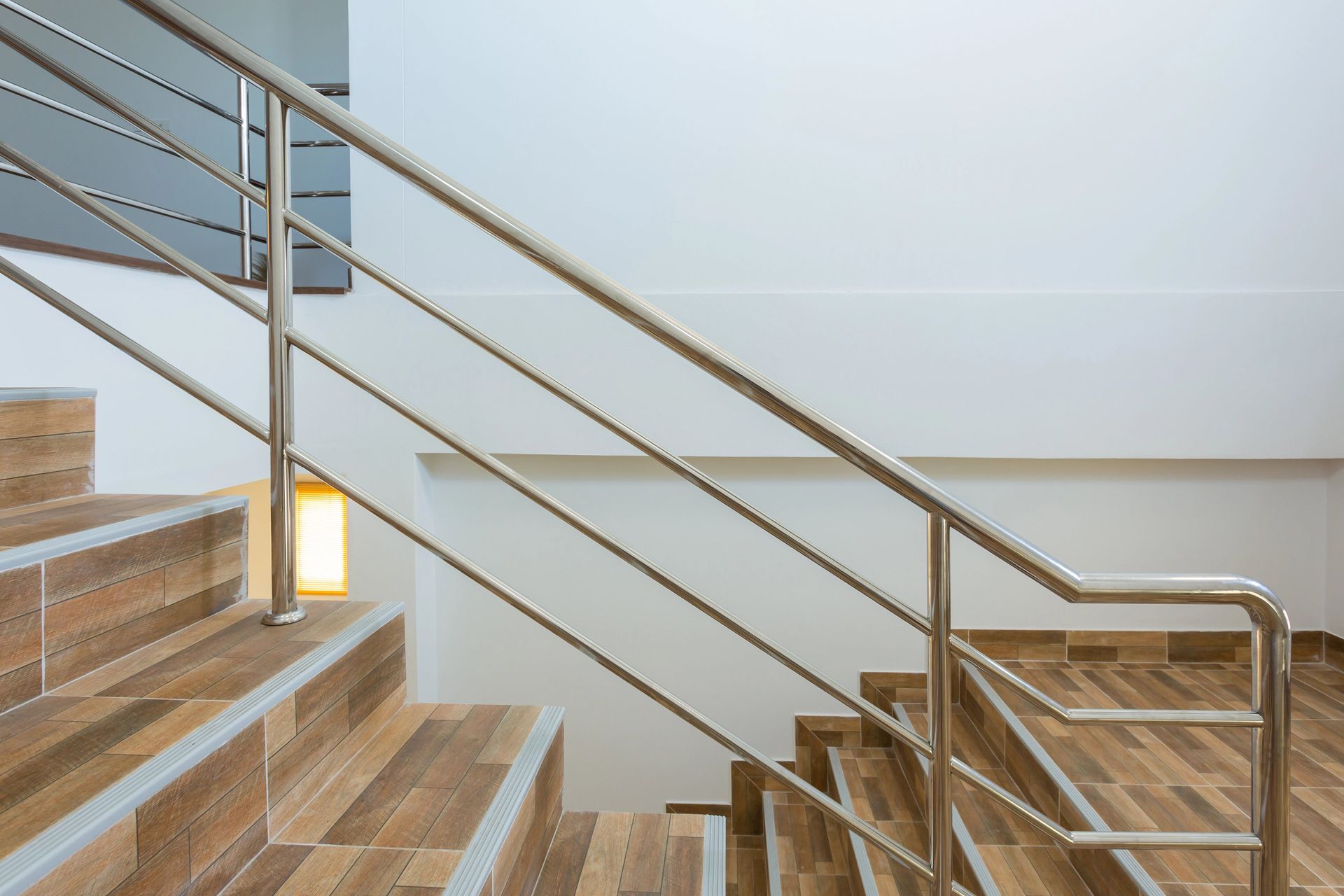Meeting Dallas Building Code Standards for Handrail Installations
August 15, 2024
As a leading provider of custom handrails in the Dallas area, we at Dallas Handrails
take building code compliance very seriously. Proper adherence to local safety regulations is essential for ensuring your handrail installation functions reliably and protects users from potential hazards.
In this post, we'll dive into the key Dallas building code requirements for handrail height, gripping surface, strength, continuity, and more. By understanding these standards, you can work with our team to design and install a handrail system that not only looks great, but also meets the strict safety guidelines set forth by the City of Dallas.
Handrail Height
The Dallas building code specifies that handrails must be installed between 34 and 38 inches above the surface of the stair treads or ramp. This height range is designed to provide comfortable and accessible gripping for users of varying ages and statures. Our team carefully measures each installation site to ensure the final handrail height aligns with these guidelines.
Handrail Gripping Surface
When it comes to the gripping surface of the handrail, the Dallas code has some very specific requirements. The surface must be continuous, without interruption by newel posts or other obstructions. It must also have a circular cross-section with an outside diameter between 1.25 and 2 inches - the ideal range for providing a secure, comfortable grip. Additionally, there must be at least 1.5 inches of clearance between the handrail and any adjacent wall or surface.
Handrail Strength
Safety is paramount when it comes to handrail installations, which is why the Dallas building code has stringent strength requirements. Handrails must be able to withstand a concentrated load of 200 pounds applied in any direction at any point along the top of the rail. They must also be able to support a distributed load of 50 pounds per linear foot, also applied in any direction. Our team uses heavy-duty mounting hardware and specialized installation techniques to ensure every handrail meets or exceeds these strength standards.
Handrail Continuity
Continuous, uninterrupted handrails are critical for safe navigation, especially on stairs and ramps. The Dallas code requires that handrails run the full length of the stairs or ramp, from the top riser to the bottom riser. They must also return to the wall, guard, or floor at each end, or terminate in a newel post. This seamless design helps users maintain a secure grip and consistent support as they ascend or descend.
Additional Requirements
Beyond the core elements above, the Dallas building code has some additional handrail guidelines that our team closely follows:
Handrails are required on at least one side of enclosed stairways with 4 or more risers.
Ramps with a slope greater than 1:20 must have handrails on both sides.
Handrails cannot project more than 4.5 inches into the required width of a stairway.
Adhering to these detailed code requirements is essential for ensuring the safety and longevity of any handrail installation. At Dallas Handrails, we make it a priority to stay up-to-date on the latest local regulations and work closely with building inspectors to guarantee full compliance.
When you partner with our team, you can have complete confidence that your new handrail system will not only enhance the look and accessibility of your property, but also meet the strict safety standards put in place by the City of Dallas. Contact us today to learn more about our custom handrail solutions and how we can help you navigate the building code requirements.
You might also like

In the pursuit of creating spaces that are safe and accessible to everyone, handrails play a vital role. They are more than just support structures; they are key elements in ensuring that individuals of all abilities can navigate environments with confidence and security. Whether in homes, public spaces, or commercial buildings, handrails contribute significantly to accessibility, making them indispensable in modern design and construction. Handrails and the Importance of Accessibility Accessibility is a fundamental aspect of inclusive design, aimed at making spaces usable by people of all ages and abilities. Handrails are essential components in achieving this goal. For individuals with mobility challenges, such as the elderly or those with disabilities, handrails provide the support needed to safely navigate stairs, ramps, and other elevated areas. Without handrails, these individuals face increased risks of falls and injuries, making many spaces difficult or even impossible to access. In public spaces and commercial buildings, handrails are not just a courtesy—they are often required by law. Regulations like the Americans with Disabilities Act (ADA) mandate the installation of handrails in specific areas to ensure that everyone, regardless of their physical abilities, can access and use the facilities safely. Compliance with these regulations is not only a legal obligation but also a reflection of a commitment to creating inclusive environments. Enhancing Safety Through Design The design and placement of handrails are crucial in enhancing safety and accessibility. Properly designed handrails provide a stable and comfortable grip, allowing users to maintain their balance and reduce the risk of falls. For stairs and ramps, handrails should be installed at an appropriate height and extend beyond the last step to offer continuous support. In addition to standard handrails, there are specialized designs that cater to specific needs. For example, double-height handrails are often installed in spaces used by both adults and children, ensuring that people of different heights can access the support they need. Handrails with tactile elements, such as textured grips or Braille indicators, are also important for individuals with visual impairments, helping them navigate spaces safely. The materials used in handrail construction also play a role in accessibility. For instance, handrails made from non-slip materials or those with a matte finish can prevent slips, especially in wet or humid conditions. Rounded or ergonomically shaped handrails provide a more comfortable and secure grip, which is particularly important for individuals with limited hand strength or dexterity. Handrails in Various Environments Handrails are essential in a variety of environments, each with unique requirements for accessibility and safety. Residential Spaces: In homes, handrails are often installed along staircases, in bathrooms, and on porches or decks. For elderly residents or those with mobility issues, handrails provide the necessary support to move safely within their homes. In bathrooms, grab bars—a type of handrail—are critical for preventing slips and falls in wet areas. Commercial Buildings: In offices, shopping centers, and other commercial spaces, handrails are vital for ensuring that employees, customers, and visitors can navigate the premises safely. Compliance with accessibility standards is particularly important in these settings to avoid legal issues and ensure that the facility is welcoming to all. Public Spaces: Parks, schools, and transportation hubs all require handrails to make them accessible to the public. In these environments, handrails often need to withstand heavy use and exposure to the elements, making durability and maintenance key considerations. Healthcare Facilities: In hospitals and clinics, handrails are crucial for patient safety. They are commonly found in corridors, stairwells, and patient rooms, providing support for individuals who are recovering from surgery, dealing with chronic conditions, or managing temporary mobility issues. Conclusion Handrails are fundamental to creating accessible, safe, and inclusive spaces for all. Whether in residential, commercial, or public settings, they provide essential support that allows individuals of all abilities to navigate their environments with confidence. By investing in well-designed, compliant handrails, you not only enhance the safety and accessibility of your space but also demonstrate a commitment to inclusivity. At Dallas Handrails, we understand the importance of accessibility and offer a wide range of handrail solutions that cater to the diverse needs of our clients, ensuring that every space is safe and welcoming for everyone.

When designing or renovating a space, the choice of handrail material is a critical decision that impacts both the safety and aesthetic of the environment. Handrails are not only functional, providing support and guidance, but they also serve as key design elements that can enhance the overall look of a space. Whether you’re working on a residential project, a commercial space, or an outdoor area, selecting the right material for your handrails is essential. This guide explores various handrail materials and their suitability for different spaces, helping you make an informed choice. 1. Stainless Steel: Modern and Durable Stainless steel is a popular choice for modern interiors and exteriors due to its sleek appearance and robust durability. This material is resistant to corrosion, making it an excellent option for both indoor and outdoor use. In contemporary settings, stainless steel handrails offer a clean, minimalist look that complements other modern design elements such as glass, concrete, and metal. For commercial spaces, stainless steel handrails are ideal because they can withstand heavy use and are easy to maintain. They are also a great choice for staircases, balconies, and ramps, where durability and safety are paramount. The reflective surface of stainless steel can add a touch of sophistication to any space, making it a versatile material for a variety of applications. 2. Wood: Warmth and Timelessness Wooden handrails bring a sense of warmth and natural beauty to any space. This material is timeless and versatile, fitting seamlessly into both traditional and modern interiors. Wood can be stained or painted to match the existing decor, offering a high degree of customization. In residential spaces, wooden handrails are particularly popular for staircases, providing a comfortable grip and a classic look. They are also suitable for outdoor decks and porches, where they can be treated to withstand the elements. However, wood requires regular maintenance to keep it looking its best, especially in outdoor settings where it is exposed to moisture and sunlight. For those looking to create a cozy, inviting atmosphere, wooden handrails are an excellent choice. They can be crafted in various styles, from simple and sleek to ornate and decorative, making them suitable for a wide range of design aesthetics. 3. Glass: Transparency and Elegance Glass handrails are synonymous with modern, high-end design. They offer a sense of openness and transparency, making spaces feel larger and more connected. Glass handrails are typically used in combination with stainless steel or aluminum posts, providing a strong yet visually light structure. These handrails are perfect for spaces where you want to maximize views or create a sense of flow between different areas. In residential settings, glass handrails are often used on balconies, staircases, and mezzanines, where they add a touch of elegance without obstructing sightlines. In commercial spaces, glass handrails are popular in office buildings, shopping centers, and hotels, where they contribute to a sleek, modern aesthetic. While glass handrails are undoubtedly stylish, they do require regular cleaning to maintain their pristine appearance. Additionally, tempered or laminated glass is recommended for safety, as it is more resistant to breakage. 4. Wrought Iron: Strength and Ornate Design Wrought iron handrails are known for their strength and durability, making them a great option for both indoor and outdoor use. This material is often associated with intricate, ornate designs, adding a touch of old-world charm to any space. Wrought iron handrails can be custom-made to fit specific design preferences, from simple and functional to elaborate and decorative. In outdoor settings, wrought iron handrails are commonly used for fences, gates, and staircases, where they provide a strong, secure barrier. They are also popular in traditional or rustic interiors, where they contribute to a sense of character and history. However, wrought iron is prone to rust if not properly maintained, especially in humid or coastal environments. Regular painting or coating is necessary to protect the material and keep it looking its best. 5. Aluminum: Lightweight and Versatile Aluminum handrails offer a lightweight yet durable option for various applications. This material is resistant to corrosion and requires minimal maintenance, making it an excellent choice for both indoor and outdoor use. Aluminum handrails are available in a range of finishes, including powder-coated options that provide additional protection and a variety of color choices. In residential spaces, aluminum handrails are often used for deck railings, stairs, and ramps, where they provide a sturdy and reliable support system. In commercial settings, aluminum is favored for its versatility and cost-effectiveness, offering a practical solution for large-scale projects. Conclusion Choosing the right material for your handrails is a crucial decision that affects both the functionality and aesthetic of your space. Whether you prefer the modern appeal of stainless steel, the warmth of wood, the transparency of glass, the strength of wrought iron, or the versatility of aluminum, each material offers unique benefits suited to different environments. At Dallas Handrails, we specialize in helping you find the perfect handrail solution that meets your design vision and safety needs, ensuring that every space is both beautiful and secure.

In modern interior design, every detail contributes to the overall aesthetic and functionality of a space. Among these elements, handrails often play a crucial yet understated role. Far from being mere safety features, today’s handrails are integral components of interior design, offering a blend of style, functionality, and innovation. Whether you’re designing a sleek office environment or a chic residential space, the right handrail design can elevate your interior to new heights. Here’s a look at some of the top handrail designs that combine style and functionality for modern interiors. 1. Minimalist Metal Handrails Minimalism is a hallmark of modern design, and metal handrails embody this principle perfectly. These handrails, often made from stainless steel or aluminum, feature clean lines and a sleek finish that complements a variety of interior styles. The minimalist metal handrail is especially popular in contemporary homes and commercial spaces where simplicity and elegance are key. These handrails are not only visually appealing but also durable, making them a practical choice for high-traffic areas. For an ultra-modern look, consider handrails with a matte black finish. This option adds a touch of sophistication while maintaining the minimalist aesthetic. The versatility of metal handrails allows them to blend seamlessly with materials like glass, wood, and concrete, offering endless possibilities for customization. 2. Floating Glass Handrails For those looking to make a bold statement, floating glass handrails are an excellent choice. These handrails use tempered glass panels as the primary support, creating a floating effect that is both visually striking and functionally sound. The transparency of glass allows for unobstructed views, making spaces feel more open and airy—a key aspect of modern design. Floating glass handrails are ideal for staircases, balconies, and mezzanines in contemporary homes and offices. They work particularly well in spaces that emphasize natural light and openness. Additionally, glass handrails can be paired with metal or wooden accents to add warmth and contrast to the design. 3. Industrial-Inspired Cable Railings The industrial design trend has gained significant traction in modern interiors, and cable railings are a perfect fit for this style. Made from thin, tensioned cables, these handrails offer a sleek, industrial look that is both functional and aesthetically pleasing. Cable railings are often used in lofts, urban apartments, and modern offices where the industrial aesthetic is prevalent. Cable railings are highly durable and require minimal maintenance, making them a practical option for busy environments. The thin cables provide a sense of openness while ensuring safety, making them ideal for spaces that prioritize both design and security. To enhance the industrial vibe, consider combining cable railings with exposed steel or reclaimed wood elements. 4. Wooden Handrails with a Modern Twist Wooden handrails have long been a staple in interior design, and modern interpretations of this classic material continue to thrive. Today’s wooden handrails often feature streamlined shapes, smooth finishes, and innovative combinations with other materials, such as metal or glass. These handrails offer the warmth and natural beauty of wood while maintaining a contemporary edge. A popular trend in modern interiors is the use of light-colored woods, such as oak or maple, which bring a sense of freshness and lightness to a space. For a more dramatic effect, dark-stained woods like walnut or ebony can create a striking contrast against light walls and floors. The versatility of wooden handrails allows them to complement a wide range of interior styles, from Scandinavian minimalism to mid-century modern. 5. Integrated LED Handrails For those seeking a truly innovative design, integrated LED handrails offer a cutting-edge solution. These handrails incorporate LED lighting directly into the railing structure, providing both illumination and support. LED handrails are ideal for modern interiors that emphasize technology and innovation, such as high-tech homes, luxury apartments, and futuristic office spaces. The soft glow of integrated LED lighting can enhance the ambiance of a room while providing functional lighting for stairs and hallways. LED handrails can be customized in various colors and brightness levels to match the overall design scheme. This blend of form and function makes LED handrails a standout feature in any modern interior. Conclusion Handrails are no longer just safety features—they are essential design elements that can significantly enhance the look and feel of modern interiors. From minimalist metal designs to innovative LED options, the right handrail can elevate your space, combining style with functionality. For those looking to make a statement in their home or business, Dallas Handrails offers a wide range of options to suit any modern design vision.
